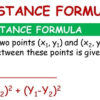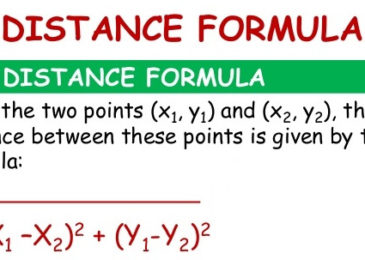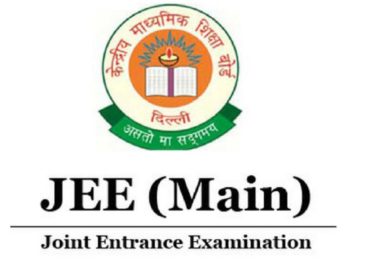There’s a reason why the NCERT textbook is the standard study material for CBSE students. It is framed to address the needs of all the students and hence written in a language so that students can grasp the important topics easily. It also follows the CBSE syllabus and is hence highly favored by teachers and the book receives updates as and when required making the teaching work a bit easier. With the advancement of English becoming the world’s communication tool, many students learn the language. But as the students progress in classes, the English textbooks tend to become more challenging and tricky. The truth is if the NCERT textbook is used well, there is a lot to gain from it. And hence, this article talks about methods on using the NCERT textbooks for English for class 11. Be it for your exams or just for leisure, you can get better in no time. Also, the textbook is filled with amazing writings, poetry, and plays. Use NCERT Textbooks for English for Class 11 for availing the content in the syllabus.
As per the CBSE syllabus, the students are recommended to use the following three textbooks: ‘Hornbill’, ‘Snapshots Supplementary Reader’, and ‘Woven Words’.
Hornbill
The Hornbill textbook is used as study material for enhancing reading comprehension and for writing skills. It contains 8 lessons as shown below.
| 1. The Portrait of a Lady | 5. The Ailing Planet: the Green Movement’s Role |
| 2. We’re Not Afraid to Die… if We Can All Be Together | 6. The Browning Version |
| 3. Discovering Tut: the Saga Continues | 7. The Adventure |
| 4. Landscape of the Soul | 8. Silk Road |
And this is the syllabus for the writing section.
| 1. Note-making | 4. Essay-writing |
| 2. Summarising | 5. Letter-writing |
| 3. Sub-titling | 6. Creative Writing |
A simple rule would be to start off by reading the lesson. Don’t try to immediately look up the unknown words from a dictionary. Try to figure out the meaning of the word with the context of the sentence and only use a dictionary or Google when you can’t come up with anything. Pay close attention to the tone of the paragraphs and ponder over it. There are audiobooks of Hornbill available over the internet which might help you understand the content better. Once down with the reading part, solve the exercises and questions present immediately after the chapter. There might be class discussion sections that might be of help too but mostly try to focus on the exercises. The exercise consists of 6 sections: understanding the text, talking about the text, thinking about language, working with words, noticing form, and things to do.
‘Understanding the text’ and ‘Talking about the text’ sections test the amount of the chapter you grasped. If you get stuck on some question, read that part of the chapter again to find out the answer. This section will help you out in exams when you have to write brief answers. But if you can’t reach an answer, don’t be afraid to ask your teacher or friends for help, or you can even watch the online teaching lectures.
‘Thinking about language’ section is more on the casual side where you connect with the story/essay/fiction/poem, etc.
‘Working with words’ and ‘Noticing Form’ sections are those exercises that will help you improve your grammar and it will be helpful in exams as well. Try to focus a bit more on the sentence structure while solving questions from these sections.
And lastly ‘Things to do’ section asks you to execute a task and write about it. This will help you come up with ideas in the writing section.
Then for the writing skills part of the textbook which has the purpose of conveying the main idea or theme with a long piece of writing. It helps one figure out the sub-topics that are present in between the lines. It helps one ponder over the real-world issues and after reading the chapter, there are some tasks that the student has to follow. Although this might be an important section for enhancing your writing and grasping skills, save it for later. Finish the reading skills part of the textbook first, followed by the supplementary reader, and then come back for this.
Snapshots Supplementary Reader
| 1. The Summer of the Beautiful White Horse | 5. Mother’s Day |
| 2. The Address | 6. The Ghat of the Only World |
| 3. Ranga’s Marriage | 7. Birth |
| 4. Albert Einstein at School | 8. The Tale of Melon City |
Snapshots Supplementary Reader is filled with different kinds of stories, loose writing pieces, poems, etc. ‘Reading with Insight’ section puts you in the head of the writer and notices the tiny details you failed to capture while reading the chapter initially. It also helps you with roleplaying and with your creative writing.
Woven Words
The ‘Woven Words’ textbook has three sections: short stories, poetry, and essay. These are the chapters from Woven Words.
| Short Stories | |
| 1. The Lament | 5. Pappachi’s Moth |
| 2. A Pair of Mustachios | 6. The Third and Final Continent |
| 3. The Rocking-horse Winner | 7. Glory at Twilight |
| 4. The Adventure of the Three Garridebs | 8. The Luncheon |
| Poetry | |
| 1. The Peacock | 7. Hawk Roosting |
| 2. Let me Not to the Marriage of True Minds | 8. For Elkana |
| 3. Coming | 9. Refugee Blues |
| 4. Telephone Conversation | 10. Felling of the Banyan Tree |
| 5. The World is too Much With Us | 11. Ode to a Nightingale |
| 6. Mother Tongue | 12. Ajamil and the Tigers |
| Essays | |
| 1. My Watch | 5. What is a Good Book? |
| 2. My Three Passions | 6. The Story |
| 3. Patterns of Creativity | 7. Bridges |
| 4. Tribal Verse | |
There are exercises after every lesson which are divided into the following sections: understanding the text/poem, talking about the text, appreciation, language work suggested reading, and try this out.
‘Understanding the text/poem’, ‘Talking about the text’, ‘Appreciation’ sections makes you wonder about certain points that may have gone unnoticed and understand the tone better. ‘Language work’ enhances your vocabulary. Lastly, the ‘Suggested Reading’ section gives a way to find out similar pieces of writing.





